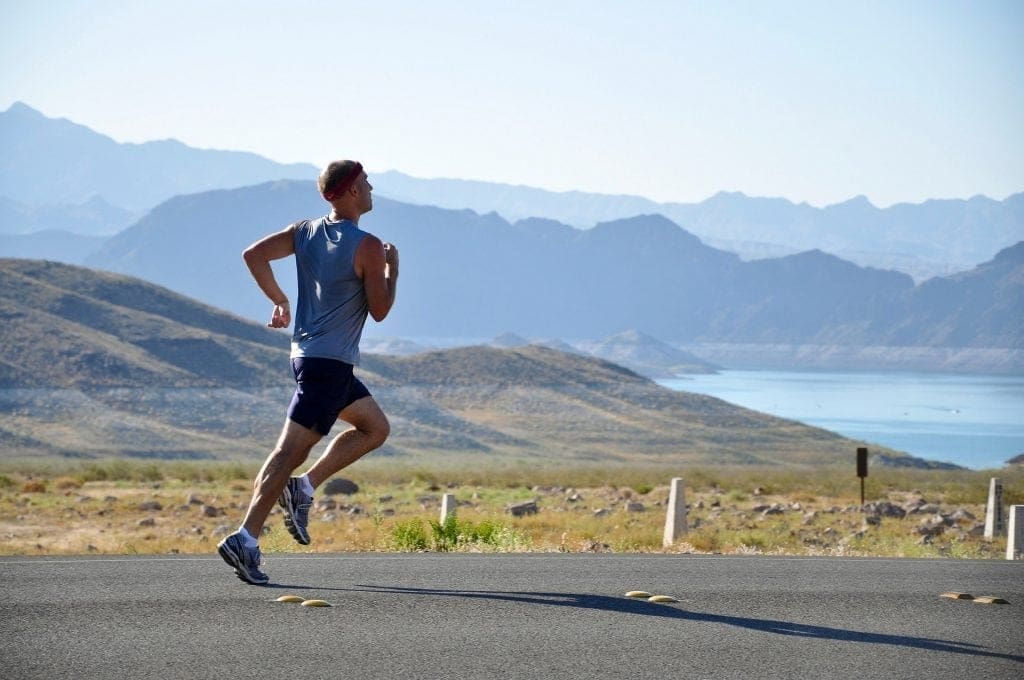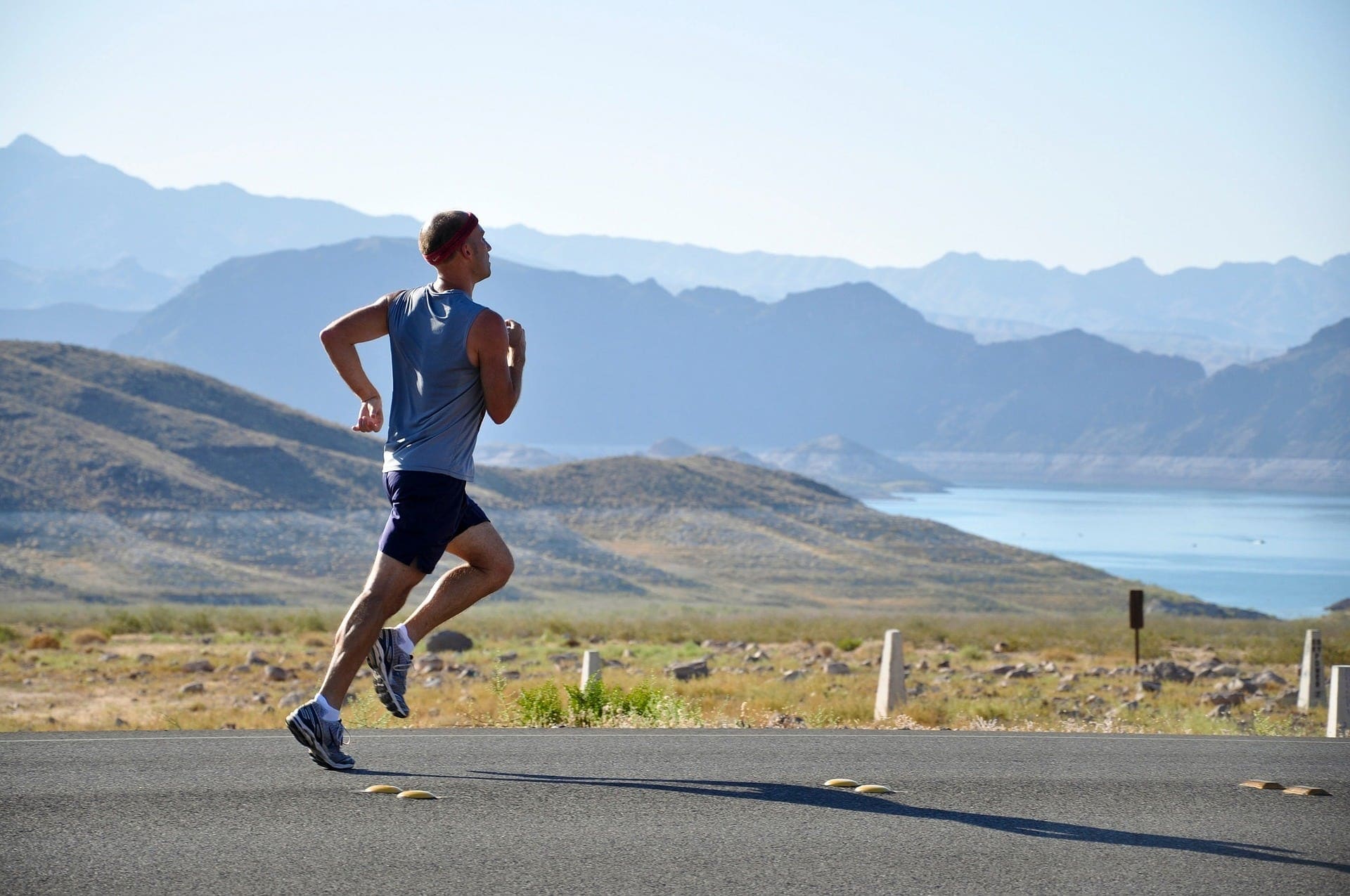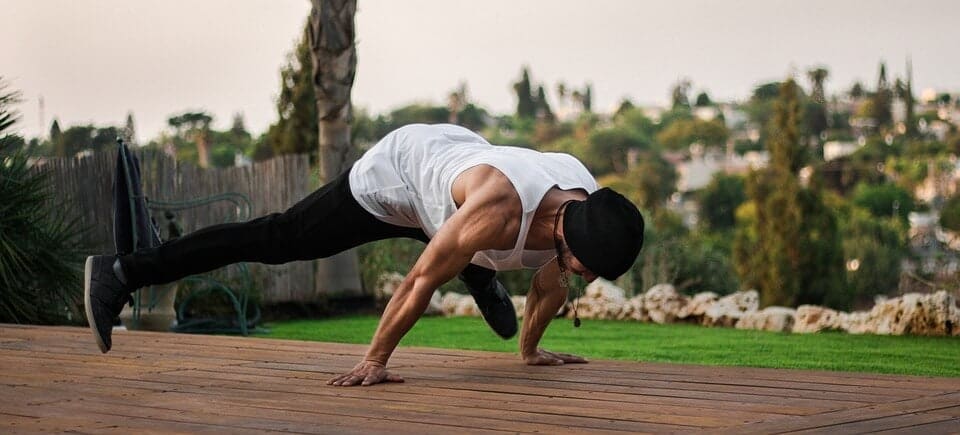There are endless reasons to run outside—and even more to venture off the paved path to more challenging gravel or dirt terrain. Trail runs provide great mental stimulation, agility work, and a change of scenery—but you might not think of them as an opportunity to build muscle. Turns out, if you add a little structure to your runs—and some strategically placed exercises—you can burn more calories and gain strength while boosting your cardiovascular fitness.

“A lot of times when people hit the trails, they just go for slow distance runs,” says Stephanie Violett, Ph.D., a running coach and sports nutritionist based in Bend, OR. “Adding some intensity is a great way to break up the run, improve your fitness, build muscle, and make you a more efficient runner.”
And who doesn’t want that? Here, seven ways to take your trail runs to the next level.
1. Add a Dynamic Warmup
“A slow-building dynamic warmup is great for trail runs,” says Danny Mackey, coach of the Brooks Beasts pro mid-distance track club, which is currently training with trail runs at altitude in Utah. He recommends starting with 10 front and side leg swings. Then, get into a walk-stretch-walk-stretch dynamic. Take two steps, then come into a hamstring stretch, continuing that pattern for 15 meters. Repeat for a quad stretch, then “keep going, hitting all the major muscle chains.”
A walking lunge is also a great way to fire up your glutes before you take on an incline, says John Henwood, Olympian and running coach in New York City. “With steep trails, you might be using your glutes more than you’re used to with flat-surface running.”
You can add in other track drills too, like Frankenstein kicks, butt kicks, high knees, and hip circles, says Violett. “A good warmup gets the blood flowing, helps protect you from injury, and prepares the body to run hard.”
Spend at least five minutes doing dynamic stretches and drills for your warmup, she says.
2. Strengthen Your Ankles
Trails can be littered with uneven terrain, rocks, and sticks you have to dodge. All part of the fun—until you’re sidelined with a sprained ankle. When the muscles around the ankle are strong, you’re less likely to roll it, and more likely to bounce back without a major injury if you do, says Henwood.
Bring a TheraBand to the trail head to practice some strengthening exercises before you start your run. Henwood suggests using the resistance band to performance exercises like the ones in the video below, focusing on plantar flexion, ankle eversion, ankle inversion, and dorsiflexion.
“Doing strengthening exercises before the run will help activate those muscles,” he says.
[embedded content]
3. Try a Fartlek
An easy way to add more intensity to your run is with a simple fartlek. Violett suggests a one-minute-on, one-minute-off structure—pushing hard, but not all-out sprinting, for one minute, then jogging to recover the next minute.
“This really helps to break up the run because you’re always focused on changing pace,” she says. This is a great workout option for someone who’s not a frequent runner and doesn’t want to deal with more complex interval training, but still wants to push themselves hard, she says.
Do the fartlek pattern 8-10 times, so you’re working for about 16-20 minutes, with a 10-minute warmup run before and a 15-minute cooldown run after. “If you want to add more mileage, the cooldown is where you can tack on,” she says.
4. Hit the Hills for Repeats
Another benefit of hitting the trails: automatic incline work. Make the most of it by going up more than once.
“Hills are great for working on upper-end fitness and lower-body strength,” says Violett. “And they’re sometimes better for runners because they allow you to work hard without causing as much of the wear and tear on muscles and tendons.” Try one of these three options for hill repeats, Mackey recommends. You can do steeper hills for short sprints and a smaller hill gradient for long efforts.
- Short sprints (under 10sec.). “These are good even if you’re doing an easy recovery run because they won’t wear you down too much,” he says. Run at a hard, all-out sprint pace, then walk back down for recovery. Do 8-10 reps.
- Medium length (30-60sec.). “These will give you a great bang for your buck,” says Mackey. Depending on your goals, you can do up to 12 repeats (which will be a tough workout), but 6 is still enough to get an anaerobic gain, he says. Maintain a quick pace, but not a full sprint. Jog down for recovery.
- Long tempo effort (for 3-10min.). Focus on form to drive you up the hill. “Make sure you’re swinging your arms front to back versus side to side. You should be able to see your hand come up to almost eye-level,” Mackey says. Another cue: knee drive. “Make sure you’re standing tall and extending your knees. That’ll help to ensure you’re using your posterior chain for power,” he notes. Complete 3-6 hill repeats at a challenging but maintainable pace. Jog down for recovery.
5. Mix in a Bodyweight Circuit
“Adding in circuit-training exercises can increase energy demands,” says Mackey, which means more calories are burned. Try adding five minutes of circuit work after each mile, recommends Violett.
“I would do 20-25 reps of a bodyweight strength exercise, then move on to another, and cycle through those moves for five minutes,” she says. These exercises can be burpees, jump squats, step ups/”box jumps” (on a big rock, bench, or log), pushups, split-squat jumps, frog jumps, lateral hops, bounding, jumping jacks, and plank holds.
6. Complete an Interval Ladder
Much like the fartlek, intervals allow you to go hard at certain points, then recover before going hard again. Instead of going 1 minute on, 1 minute off, switch things up with an interval ladder:
Mackey recommends three sets of this ladder:
- 3 minutes hard, one minute jog
- 2 minutes hard, 1 minute jog
- 1 minute hard, 1 minute jog
- 30 seconds hard, 1 minute jog
- 15 seconds hard, 1 minute jog.
“Pushing the intensity brings your heart and breathing rate up and really helps improve performance,” says Mackey. “This will increase your aerobic capacity and allow you to tolerate high lactate levels in your muscles—both are key to helping you perform better in any endurance sport.”
Plus, intervals are more stimulating than a steady-state run. “Mentally, I always say you have to give it a try to see how much this can increase your focus,” he says. “It’s counter-intuitive to think going harder is more fun, but the brain is just like our muscles—it craves variety. I would be surprised if you didn’t enjoy these types of workouts, even though they might burn a little more!”
7. Tack on an Effective Cooldown
Spending five minutes on post-run stretching is important to injury prevention. Focus on “long-chain” stretches, says Mackey, or stretching the entire anterior and posterior chain. “Our muscles are all connected, so if your calf is strained, that could affect your back too. You need to address your entire body when you’re stretching.”
Adding breath work to your stretches can also be especially helpful for future trail runs, says Mackey, as this opens up your diaphragm and rib cage and can help strengthen your hip and core region (areas that are crucial to quickly changing direction on trails).
“If you’re pressed for time, you can combine traditional long-chain stretching with big, slow inhales and exhales, holding your breath for one second at the end of the big inhale,” says Mackey.
Source Link – https://www.mensjournal.com/health-fitness/how-to-burn-more-calories-and-build-muscle-on-your-trail-runs/




